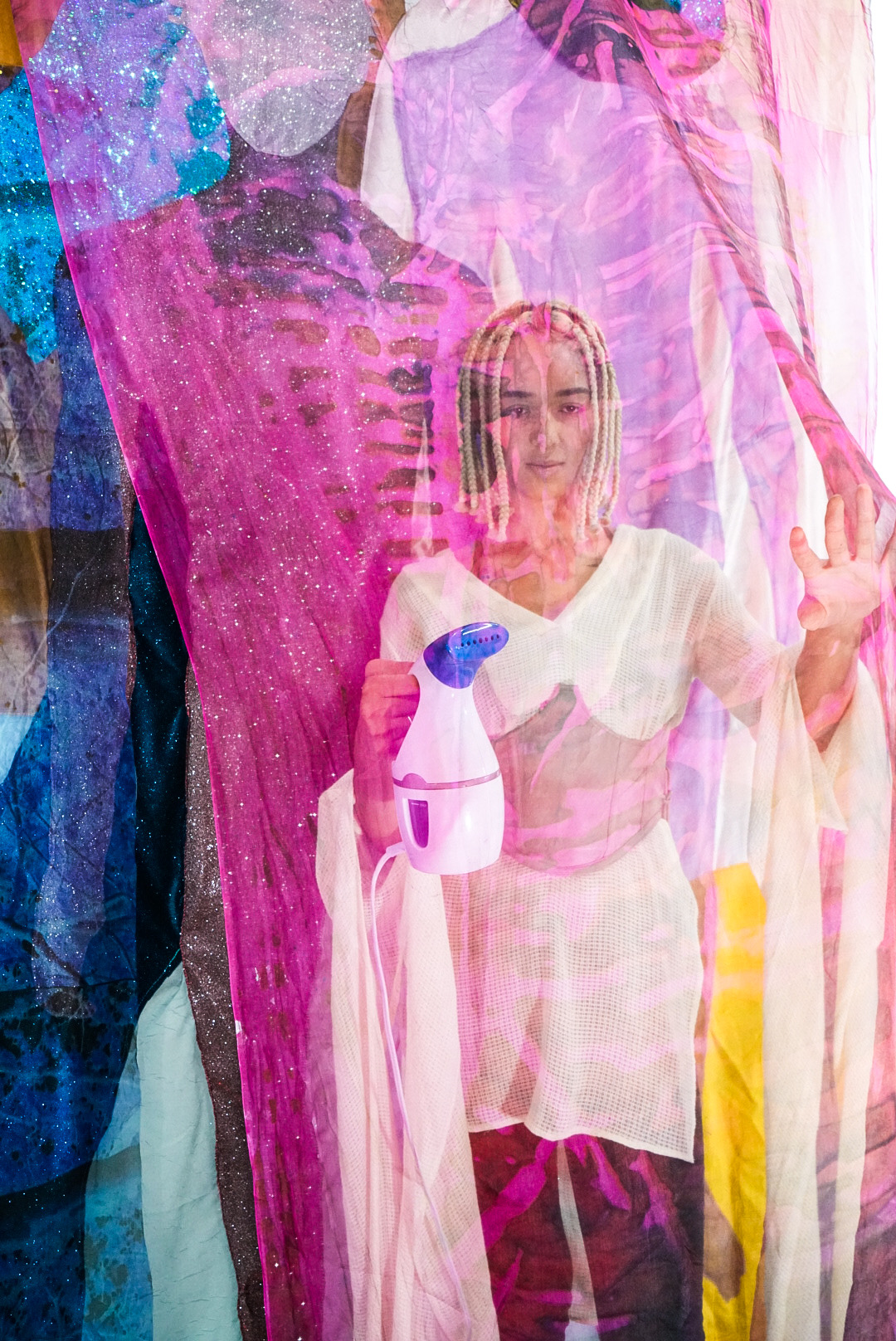
Although it wasn’t until she graduated college that Ambrose Murray felt she could fully embrace the life of an artist, her talent can be traced back to her youth in Asheville, North Carolina, where she assimilated the influences of brass-band performances and the punk community. Growing up with a Black mother and a white father, Murray existed in a dichotomy of sorts. From as early as middle school, she juggled two professional goals: she would either become a fashion designer or an interior designer. Her grandmothers teamed up in support of her dreams, gifting her subscriptions to magazines like Vogue and Essence, funding trips to Ebony fashion shows and making a point of fueling her creative development. When she went to Yale, where she majored in African American studies, her professor Elizabeth Alexander pushed Murray to deepen her thinking, emphasizing the aliveness that can emanate from an artwork and analyzing Black artists such as Alvin Ailey, Michael Jackson and poet Nikky Finney. In 2016 Murray began taking art classes, working in figurative painting before turning to a multidisciplinary approach. She then joined the fine-art study abroad program at Central Saint Martins in London.
After earning her degree, she moved to Mississippi, completing a residency at the Mississippi Center for Cultural Production—known as Sipp Culture—where she began to experiment with the very materials and ideas that had motivated her before she went to college. “It’s all been a bunch of experimentation, and I feel like I am in a rhythm now,” Murray confesses, referring to the painted fabric collages for which she has started to become known: vibrant pieces made with gorgeous dyes and stunning textiles. She creates a sense of depth in these works, with intricate shapes and shadows and splashes of life, building on one another to create ethereal environments. Into the layering of textiles and textures, Murray incorporates sparkles and light inspired by the work of her partner, Amani Lewis.

Examine her newer pieces, and you will quickly become immersed in Murray’s abstracted environments, with ambiguous yet powerful Black subjects at their center. While at Sipp Culture, she started a new oil painting on fabric, She appears like a glint in the window, which she took up again at the Miami-based Fountainhead Residency in July 2020. The work showcases textured fabrics and powerful dyes, revealing a Black woman making eye contact with the viewer. The subject has closely cropped hair adorned with moons and stars, her features are realistic and intricate and she wears a silk slip dress the artist procured in Mississippi. The back of the piece offers an effect like an array of windows, allowing light to move through the fabric, offering a sense of transparency and dimensionality that enables the viewer to experience both sides at once. The subject simply flows, evoking an angelic figure almost like an apparition. “That’s why her body isn’t in full form,” Murray says of the composition, “kind of like she’s coming into form right before your eyes.”
Much of her work—the physicality of her subjects, the richness of her paints and dyes, the lush fabrics laying the foundation for each piece—is informed by writers who have made an impact on Murray, among them Toni Morrison and Christina Sharpe. Most recently, the latter’s In the Wake resonated with Murray, though the genre of Afropessimism was at first somewhat challenging for the artist to get into. Sharpe’s work, Murray explains, examines the cyclic nature of slow death, exploring how, in the current sociopolitical context, Black death has become a mainstay in maintaining the existing power structure. “She talks about all these things,” explains Murray, “the weather and the wake, and there are all these potent metaphors that string the whole book together.”
With a solo show just opened at the N’Namdi Contemporary Miami last week and another scheduled at Fridman Gallery in New York this fall, Murray hopes to continue these conversations, to allow the viewer to feel seen and to build resources for those who might not have them.










 in your life?
in your life?

